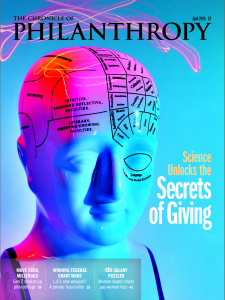Is fundraising an art or is it science?
 According to an article in the April 2015 Chronicle of Philanthropy, we are doing it all wrong.
According to an article in the April 2015 Chronicle of Philanthropy, we are doing it all wrong.
John List, professor and chairman of the economics department at the University of Chicago, is also principal investigator of the Science of Philanthropy Initiative. List and his colleagues are working with non-profit organisations to “take the economic theory out of the university lab and test what works in the real world”. He calls this behavioural economics. List and his team are studying why people make the choices they do and how those choices might benefit society.
List talks about situations where he sought advice from local charities on how to raise money. List found himself hesitant to use the methods described because they had not been subjected to the rigors of the scientific method. “Everyone said they had done things the same ways for years or that their boss had raised money before them in those ways, so they had confidence in what they were doing. But no one had really tested it all out,” List said.
The science suggests people give because:
- Martyrdom can lead to generosity – donors are asked to sacrifice.
- Donors crave prestige.
- Young donors bring their friends.
- Older people without kids are likeliest to leave money to charity.
The science also suggests we should avoid these pitfalls:
- Emphasising the magnitude of the issue. Donors respond better to the needs of one person or a small group of people.
- Expecting people to be altruistic. Most people give for selfish reasons – the warm feeling they get or the social rewards.
- Focusing an appeal on money. Donors would rather be asked to help solve problems than to contribute financially.
- Counting on donors to give again. Donors often want a one-night stand and not a long-term relationship.
- Making donors feel guilty. People like the “rush” when giving. Do not spoil that feeling.
- Offering premium gifts. Offering coffee mugs, tote bags and other items may invoke feelings of selfishness and decrease the chances donors will give.
Read more about List’s work in this month’s Chronicle of Philanthropy.
